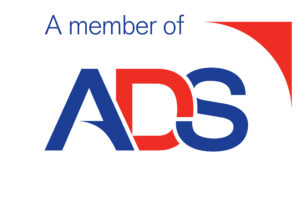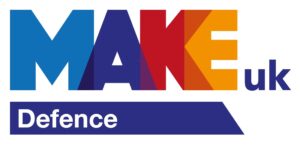LEGAL SYSTEM OVERVIEW
Iran possesses a theological legal system, grounded in civil and Islamic law. The Assembly of Experts is the highest Constitutional body, although the Supreme Leader has absolute power over all government institutions, including the judiciary, and also acts as the commander of the armed forces, including the Iranian Revolutionary Guards Corps. The head of the judiciary and the speaker of parliament are both loyal to the Supreme Leader, who can, in any case, reverse parliamentary decisions by decree. Article 4 of the Constitution enshrines the role of Sharia in all aspects of Iranian life, stating, ‘All civil, penal, financial, economic, administrative, cultural, military, political, and other laws and regulations must be based on Islamic criteria.’
The Iranian Court System is categorised and has the Supreme Court at its apex. Further courts include criminal, family, and administrative courts. Although Article 156 of the Constitution upholds the judiciary’s independence, in reality the judiciary is tightly controlled. The Supreme Leader appoints the head of the judiciary, who in turn selects the senior judges in civil, criminal, military and revolutionary courts. Religious courts are also beholden to the religious leader of Iran: The Supreme Leader. Nevertheless, the judiciary’s most major issue is rampant corruption. With regards to political cases, the intelligence services determine the verdict of the trial, whilst influential Iranians can be granted impunity or influence the outcome of a trial in their favour owing to entrenched patronage systems. There are also numerous reports of bribes and irregular payments being exchanged in return for favourable verdicts. There are a number of anti-corruption laws, but in practice they are rarely implemented. Indeed, the head of the judiciary, Sadeq Larijani, reportedly owns 63 bank accounts for embezzled public funds.
The 1928 Civil Code of Iran, last amended 1982-3, is the primary source of Iranian contract law. This Code with a range of topics from obligations, employment, personal status and family law. Meanwhile, the 1969 Commercial Code defines the formation of joint stock companies and their operations; The 1990 Labour Code is the primary source of law governing employer-employee relations. There are also a range of important penal laws which cover a large range of offences, including religious offences. The 1991 Penal Code is the primary source of penal law, but the 2013 Islamic Penal Code also defines hudud, qisas and diyat crimes, of which there can be severe punishments. The Law of Political Crime defines what may be considered a political crime, including the publication of ‘false material’ and insulting politicians.
Iran is a signatory to several international treaties and conventions, including the Geneva Conventions, the Framework Convention on Climate Change, the Terrorist Financing Convention and the Joint Comprehensive Plan of Action. Iran is also a member of the Organisation of Petroleum Exporting Countries, the Organisation of Islamic Cooperation, the World Health Organisation and the World Trade Organisation. Iran is repeatedly accused of violations of international law, in several categories, from being declared a state sponsor of terrorism to violations of human rights.
BUSINESS OVERVIEW
Iran was previously subject to international sanctions, lifted in 2015, which significantly hindered the potential of its economy. Since the lifting of the sanctions however, economic growth has increased, and Iran was brought out of a deep recession; nevertheless, the annual growth of 4% is lower than the 8% target Iran had. The Iranian Rial has also lost much of its value against the dollar in the past year, resulting in the Iranian government banning the exchange of foreign currency. This combined with high inflation, at 12%, the below target GDP growth and high corruption levels mean that Iran is ranked 124 of 190 in the World Bank’s Ease of Doing Business Index, and 97 of 190 in the Starting a Business Index.
Currently, owing to the US’ withdrawal from the Joint Comprehensive Plan of Action, the future of the deal is uncertain, and the US has declared it will impose sanctions. Nevertheless, Iran has many traits which make it an appealing location for investment and business. Iran has a large, young population, a highly educated workforce, numerous mineral resources and a strategic location on the old ‘Silk Road’. Whilst the Iranian government and state entities control much of the market, and the true private sector accounts for 20% of activity, many opportunities exist across the public and private sectors. Iran’s vast oil and gas sector is mature but has potential for further expansion, and the Iranian government seeks to increase production: US$105 billion are needed to replace old extraction technology. Iran’s infrastructure also presents opportunity for investment as the state has ambitious plans in transport, water and power infrastructures, estimated to require US$1 trillion over the next decade. The growing middle class has also driven a growth in demand for premium, and indeed, Western retail goods and brands. The re-imposition of US sanctions, may have implications for companies of other nations dealing with Iran, and further advice should be sought on this. Some sanctions also remain in place, such as anti-terror and human rights sanctions.
COUNTRY OVERVIEW
The Islamic Republic of Iran is a Middle Eastern nation, located between the Persian Gulf and Caspian Sea. It borders Armenia, Azerbaijan, Turkmenistan, Afghanistan, Pakistan, Iraq and Turkey. Iran has a population of just over 82 million people, with 8.43 million of these living in the capital, Tehran. Other major population centres include Mashhad, Isfahan and Shiraz.
Persian, or Farsi, is Iran’s official language, although a number of other ethnic languages are also spoken. The vast majority of the population are Shi’a Muslims, and the state religion is Shi’a Islam; Zoroastrianism, Judaism and Christianity are also recognised, however.
Iran is seen as having very high levels of risk in its business climate, and its political-economic situation. This risk stems from the international image and consequences of Iranian international activities as well as domestic institutional weaknesses. Corruption also poses a major obstacle to business in Iran; differing forms of corruption pervade all parts of the Iranian economy and political life. As such, Iran is ranked 130 of 180 in Transparency International’s 2017 Corruption Index.
Iran’s GDP currently totals US$418.88 billion. Real GDP growth is expected to fall slightly from 2017 to 4%, which at the present is forecast to remain a steady growth rate through 2022. Iran is officially a theocratic republic, with Supreme Leader Ali Hoseini-Khamenei being the Chief of State. The government is headed by President Hasan Rouhani who selects a cabinet with the approval of the legislature, although the Supreme Leader may select certain ministers. The Supreme Leader is appointed for life by the Assembly of Experts, whilst the President is elected every four years by absolute majority popular vote, with the next election to be held in 2021. The Legislative branch consists of the 290 seat Islamic Consultative Assembly. 285 members are elected in single and multi-seat constituencies every four years, with the next scheduled for 2020. One seat is each reserved for Zoroastrians, Jews, Christians and Armenians in Iran’s North and South. Although elected by popular vote, each candidate must be approved by the Guardians Council, of which the Supreme Leader and judiciary wield much influence.
http://www.bti-project.org/fileadmin/files/BTI/Downloads/Reports/2018/pdf/BTI_2018_Iran.pdf.
https://www.constituteproject.org/constitution/Iran_1989.pdf?lang=en.
https://www.constituteproject.org/constitution/Iran_1989.pdf?lang=en.
http://www.bti-project.org/fileadmin/files/BTI/Downloads/Reports/2018/pdf/BTI_2018_Iran.pdf.
http://www.bti-project.org/fileadmin/files/BTI/Downloads/Reports/2018/pdf/BTI_2018_Iran.pdf; https://www.business-anti-corruption.com/country-profiles/iran/.
http://www.ilo.org/dyn/natlex/natlex4.detail?p_lang=en&p_isn=42163&p_country=IRN&p_count=194&p_classification=01.03&p_classcount=18.
http://www.ilo.org/dyn/natlex/natlex4.detail?p_lang=en&p_isn=79503&p_country=IRN&p_count=194&p_classification=01.03&p_classcount=18;http://www.ilo.org/dyn/natlex/natlex4.detail?p_lang=en&p_isn=21843&p_country=IRN&p_count=194&p_classification=01.02&p_classcount=2.
http://www.ilo.org/dyn/natlex/natlex4.detail?p_lang=en&p_isn=31811&p_country=IRN&p_count=194&p_classification=01.04&p_classcount=9;http://www.ilo.org/dyn/natlex/natlex4.detail?p_lang=en&p_isn=103202&p_country=IRN&p_count=194&p_classification=01.04&p_classcount=9;http://www.ilo.org/dyn/natlex/natlex4.detail?p_lang=en&p_isn=105783&p_country=IRN&p_count=194&p_classification=01.04&p_classcount=9.
https://www.bbc.co.uk/news/world-middle-east-43975498.
http://www.doingbusiness.org/data/exploreeconomies/iran.
https://www.gov.uk/government/publications/doing-business-with-iran/frequently-asked-questions-on-doing-business-with-iran.
https://www.cia.gov/the-world-factbook/countries/iran/
https://comparite.ch/iranprofile
https://globaledge.msu.edu/countries/iran/risk;
https://www.business-anti-corruption.com/country-profiles/iran/; https://www.transparency.org/news/feature/corruption_perceptions_index_2017.
http://www.imf.org/external/datamapper/NGDPD@WEO/IRN; http://www.imf.org/external/datamapper/NGDP_RPCH@WEO/IRN.
https://www.cia.gov/library/publications/the-world-factbook/geos/ir.html.
Need advice?If you’d like further information, or to discuss working with us, you can get in touch via our Contact Us page






